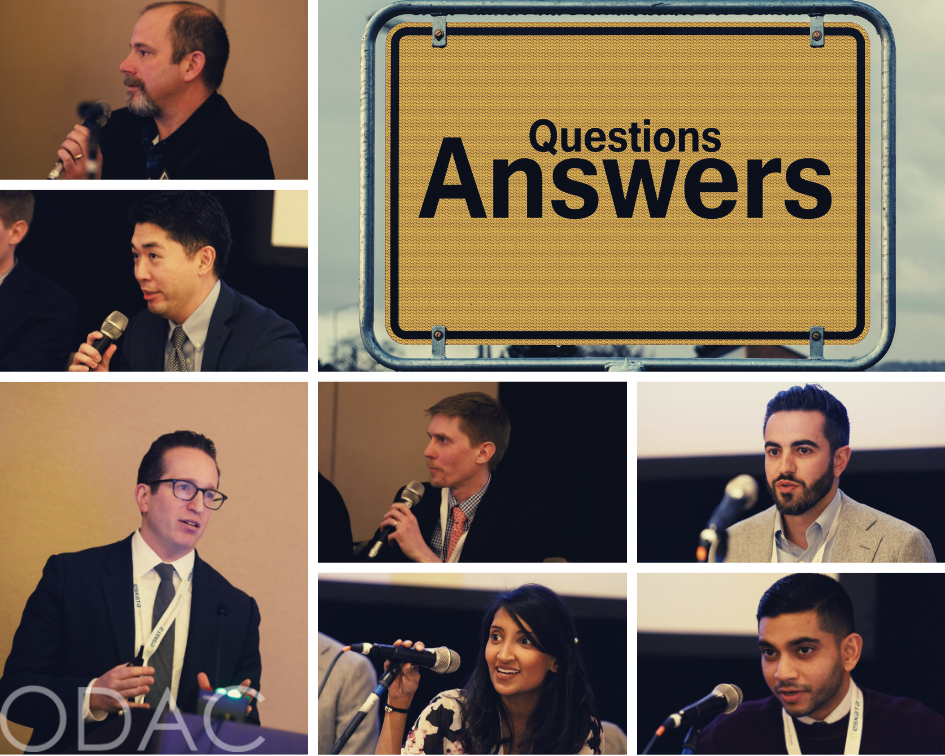During the 16th Annual ODAC, Derm In-Review, in partnership with the George Washington School of Medicine and Health Sciences, hosted a 4-hour Board Review workshop led by Dr. Adam Friedman. Mid-way through the workshop, during a brain-break panel, faculty members and recently minted board-certified dermatologists, myself included, weighed in on questions related to Board Exam preparation. Residents had the chance to ask any and every question about the Board Exam. Here are the highlights:
If you could pick two to three board preparation resources, what would you pick?
Overall, the consensus is that you should study the way you have studied for all of the prior exams in your medical career. That being said, many of the panel members favored the use of question banks, as they are both high yield and test your knowledge more effectively. You should also make sure you have resources that fall into one of the following three categories:
- Question banks (e.g. Derm In-Review, Board Vitals, AAD Question Bank, etc.)
- Review books (e.g. Alikhan, Jain, Derm In-Review)
- Dermatopathology resources
- Reviews (Kim Barron’s, etc.)
- YouTube videos
- Textbooks (Rapini, Weedon, Bolognia, etc.)
Are board questions more fact-based or management-based?
There is a combination of fact-based and management-based questions. However, all questions, including fact-based questions, are rooted in facts that should impact patient care and management. On average, each question on the board exam takes about six hours to formulate and goes through a rigorous review process, so the questions are fully vetted prior to appearing on a board exam.
Is it true that the first class to take the new exams (CORE) cannot fail?
There is a metric for passing and failing. It is possible for everyone to pass the exam, but it will be possible for people to fail the exam as well. That being said, even the first-year dermatology residents this year are unlikely to take the new, revised exam of the future.
For fast facts about the Basic, Core, and Applied exams, click here.
What do you feel you wasted time on while studying for the boards?
Because it is difficult to predict what is on the Board Exam in a given year, our panel did not feel as though they had devoted too much time to studying one particular topic nor felt they had really wasted time while studying. Many thought that perhaps CMEs from the JAAD and genodermatoses were probably more low yield.
How often is time an issue on the board exam?
Time was not an issue on the exam for any of the panel members.
Which parts of studying did you save until the end?
The answers to this question varied by the members of the panel. In general, it seems people save two categories of material for the end:
1) rote memorization
2) mini reviews
Some of the topics that the panelists saved until the end included medications and drug rashes, genodermatoses, specific genes, mnemonics, and kodachromes.
Any strategies for last minute studying?
Notecards, questions, and kodachromes. These are likely the most high-yield and fast paced.
If you were taking the test again, how would you prepare for it?
Most panelists felt that questions, questions, and more questions were the best resource for truly testing your knowledge and understanding prior to the boards. Kodachromes are also of great importance. You can never see enough clinical images before the test. It was also suggested that you could consider having a new review book without any notes in it right before studying pre-boards to be able to write all of your last-minute notes in the book rather than having notes from your first two years as well. It would make for a cleaner study experience in the end.
I have been given advice to look at as many clinical images as possible. What resources would you look to for preparation?
- Visual Dx
- AAD Kodachromes
- Andrews’ Diseases of the Skin Clinical Atlas
- Google Images
- Derm In-Review Krazy Kodachromes
Regarding CME and JAAD material that is tested, will 2018 material be on the exam, or is it the stuff from 2-3 years back?
Typically, the test covers CME material from at least 2 years prior to the exam. It is worth noting that reviewing three years’ worth of CMEs (the amount of time one is in residency) is probably around 720 pages of material. In general, you won’t have more than a handful of CME questions. Some panelists questioned the utility or ability for anyone to review that amount of material at the end. It was suggested, though, that keeping up with this during residency with co-residents is a great way to review the material and divvy up the work to make it less cumbersome.
Finally, there were two important points that were discussed which are worth mentioning:
- Don’t be afraid to make up hilarious ways to remember things with your friends. These are sometimes some of the easiest facts to remember because you associate it with fun memories made with co-residents.
- Make sure you know what everyone else knows before the test. Those who fail the board exam are those who score significantly lower than the majority of test takers. The percentage of test takers who typically fails is very low (usually < 2%). Try to stay within the normal bell curve of scores, and you’ll be well on your way to becoming a board-certified dermatologist.
Source:
Derm In-Review, in partnership with the George Washington School of Medicine and Health Sciences, Board Review workshop. Workshop Director: Dr. Adam Friedman. Presenting faculty: Justin Finch, MD, Sima Jain, MD, Vishal Patel, MD. Special Guests: Bobby Mansouri, MD, Thomas Lee, MD, Erik Stratman, MD.
Did you enjoy this post? Find more related content here.

